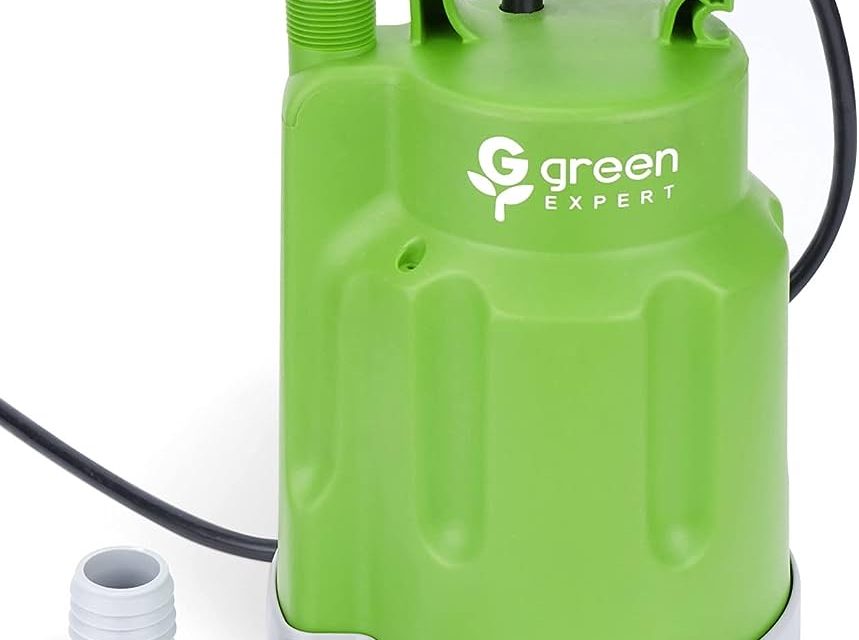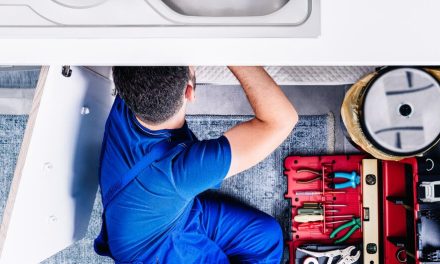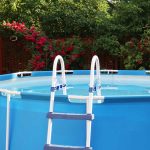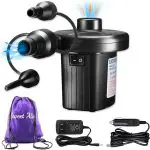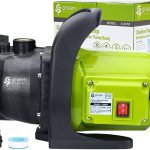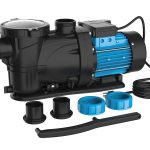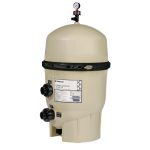To clean a green pool in 24 hours, follow these steps: Shock the pool with a chlorine shock treatment, brush the sides and bottom of the pool, and run the pool filter continuously. In addition, regularly test the water chemistry and adjust the pH and chlorine levels accordingly.
Maintaining proper circulation and filtration is crucial to clearing the pool effectively. Cleaning a green pool quickly is achievable through these steps so you can enjoy a swimmable pool in just 24 hours.
Why Do Pools Turn Green?
Pools can turn green due to algae growth caused by various factors. Learn how to effectively clean a green pool in just 24 hours with these expert tips.
Why Do Pools Turn Green?
Having a green pool can be quite frustrating. Not only does it look unappealing, but it also indicates underlying issues. Understanding why pools turn green is crucial to effectively tackling the problem and restoring your pool’s pristine condition. In this section, we will explore the primary reasons behind a green pool and the factors that contribute to its transformation.
Algae Growth In Pools
Algae growth is the primary culprit behind a green pool. These microscopic plants thrive in warm, stagnant water and can quickly take over your pool if not properly maintained. It is essential to understand the different types of algae:
- Green algae: The most common type and easily identifiable due to its green color.
- Mustard algae: Often mistaken for dirt or sand, it appears as yellow or brownish patches on pool surfaces.
- Black algae: This relentless form of algae embeds itself deep into pool surfaces and requires thorough cleaning to eradicate.
Factors Contributing To Pool Turning Green
Several factors can contribute to a pool turning green. Let’s explore these elements in order to prevent future occurrences:
- Inadequate circulation and filtration: A poorly functioning filtration system can hinder the removal of contaminants, allowing algae to flourish.
- Insufficient sanitizer levels: Chlorine or other sanitizers help to control the growth of algae. If their levels drop below recommended amounts, algae can quickly take over.
- Lack of proper pool maintenance: Neglecting routine pool maintenance, such as regular cleaning and balancing of chemicals, can create a perfect environment for algae growth.
- Pool usage and debris: Excessive swimmers, particularly without proper showering beforehand, can introduce contaminants that aid algae growth. Additionally, leaves, grass, and other organic debris can contribute to the problem.
Impact Of Weather, Sunlight, And Ph Levels
Weather conditions, sunlight exposure, and pH levels play significant roles in a pool’s susceptibility to turning green:
- Weather conditions: Heavy rainstorms can introduce organic matter and contaminants into the pool, promoting algae growth. Hot and humid weather also provides an ideal environment for algae to flourish.
- Sunlight exposure: Algae thrive in the presence of sunlight. Shaded pool areas may experience less algae growth compared to those exposed to direct sunlight.
- PH levels: Maintaining proper pH levels is crucial in preventing algae growth. Algae tend to thrive in pools with imbalanced pH levels, so regular testing and adjustments are necessary.
By understanding the causes behind a green pool, you can take appropriate measures to prevent or swiftly address the issue. Regular pool maintenance, proper water circulation, adequate sanitizer levels, and balanced pH levels are key to maintaining a sparkling and inviting swimming pool for everyone to enjoy.
Essential Tools For Cleaning A Green Pool:
Discover the essential tools you need to tackle the challenge of cleaning a green pool within just 24 hours. With these tools at your disposal, you’ll be able to restore your pool to its sparkling clean state in no time.
Essential Tools For Cleaning A Green Pool
Cleaning a green pool can seem like a daunting task, but with the right tools and techniques, you can have your pool sparkling clean again in no time. Here are the essential tools you’ll need to tackle the job:
1. Pool Skimmer:
- A pool skimmer is an indispensable tool for removing leaves, debris, and other floating objects from your green pool.
- It has a mesh net attached to a long pole, allowing you to skim the surface of the water and collect any visible debris.
- By regularly skimming your pool, you can prevent further buildup and improve water circulation.
2. Pool Vacuum:
- A pool vacuum is essential for effectively cleaning the bottom and sides of your green pool.
- There are different types of pool vacuums available, such as manual vacuums and automatic robotic vacuums, each with its own advantages.
- By using a pool vacuum, you can remove dirt, algae, and other particles that have settled on the pool surfaces, including the floor and walls.
3. Pool Brush:
- A pool brush is a must-have tool for scrubbing stubborn algae and stains from the walls and floor of your green pool.
- Choose a brush with stiff bristles that can effectively remove dirt and grime without damaging the pool surfaces.
- Regularly brushing your pool, especially in hard-to-reach areas, will help loosen debris and promote a healthier pool environment.
4. Pool Filter Cleaning Equipment:
- To maintain a clean and well-functioning pool, it’s important to regularly clean your pool filter.
- Pool filter cleaning equipment includes a variety of tools such as filter cartridge cleaner, filter cleaner solution, and a hose attachment for backwashing.
- By following the manufacturer’s instructions and cleaning your pool filter at least once a month, you can ensure optimal filtration and efficient water circulation.
Remember, having the right tools is only half the battle. It’s crucial to also follow a comprehensive cleaning and maintenance routine for your green pool. By combining the right tools, proper techniques, and regular maintenance, you can enjoy a crystal-clear pool in just 24 hours.
So, grab your pool skimmer, vacuum, brush, and filter cleaning equipment, and get ready to tackle that green pool!
Effective Chemical Treatments For Algae Removal
Discover the most effective chemical treatments for quickly removing algae and transforming your green pool into crystal-clear water in just 24 hours. These treatments are specially formulated to eliminate algae and restore your pool’s cleanliness, giving you a sparkling oasis to enjoy.
Effective Chemical Treatments For Algae Removal
If you’re dealing with a green pool due to algae growth, it’s essential to treat the problem effectively to restore crystal-clear water. Using the right chemicals can be a game-changer when it comes to fighting algae. Here are some effective chemical treatments to consider:
Different Types Of Algae Treatments
There are several types of algae that can infest your pool, and each requires a specific approach for successful removal. Here are common types of algae and their recommended treatments:
- Green algae:
- Shock treatment: Use a chlorine-based shock treatment to kill the algae and sanitize the pool.
- Algaecides: Apply a copper-based or polyquaternary algaecide to prevent regrowth.
- Yellow/mustard algae:
- Brushing: Brush the affected areas vigorously to break up the algae colonies.
- Shock treatment: Use a chlorine-based shock treatment specifically designed to target mustard algae.
- Algaecides: Consider using a specialized algaecide that specifically targets mustard algae.
- Black algae:
- Mechanical removal: Scrub the affected areas using a stiff brush or wire sponge to break through the protective layers of the algae.
- Shock treatment: Use chlorine-based shock treatment to kill the remaining algae.
- Algaecides: Apply copper-based algaecides to inhibit further growth.
Recommended Chemicals For Specific Types Of Algae
When treating different types of algae, using the right chemicals is crucial for effective results. Here are some recommended chemical treatments for specific types of algae:
- Green algae:
- Chlorine-based shock treatment: Kills green algae effectively.
- Copper-based or poly quaternary algaecide: Prevents regrowth and helps maintain clear water.
- Yellow/mustard algae:
- Chlorine-based shock treatment: Designed to target and eliminate mustard algae.
- Specialized algaecide: Helps prevent regrowth and gives additional control over yellow/mustard algae.
- Black algae:
- Chlorine-based shock treatment: Eliminates black algae.
- Copper-based algaecide: Inhibits further growth and controls black algae infestations.
Safety Precautions When Using Chemicals
While using chemicals to treat algae, it’s essential to prioritize safety. Follow these precautions to ensure a safe and effective algae removal process:
- Read the instructions: Always read and follow the manufacturer’s instructions for each chemical product.
- Use protective gear: Wear gloves, safety glasses, and a face mask to protect yourself from any potential harm.
- Handle chemicals carefully: Avoid splashing or spilling chemicals, and never mix different products together.
- Store chemicals properly: Keep all chemicals in a cool, dry, and well-ventilated area, away from children and pets.
- Test water regularly: Check the pool’s chemical balance regularly to ensure safe swimming conditions.
By utilizing these effective chemical treatments and following safety precautions, you can successfully eliminate algae from your pool and restore its inviting blue waters. Remember to select the appropriate treatments for each type of algae, and always prioritize safety throughout the process.
Step 1: Clearing Debris From The Pool Surface
In the first step of cleaning a green pool, it is important to clear debris from the surface for effective cleaning. Remove leaves, sticks, and any other debris using a skimmer or net to prepare the pool for the next steps.
Skimming Debris Off The Surface
A clean pool not only looks inviting but also promotes a healthy swimming environment. Clearing debris from the pool surface is the first crucial step in cleaning a green pool effectively. By skimming off the surface debris, you prevent it from sinking and contributing to the growth of algae.
Here’s why removing debris is essential before treating algae:
- Debris prevents proper circulation: When your pool is infested with leaves, twigs, and other debris, it hampers the circulation of water. This obstruction prevents sanitizers and chemicals from effectively reaching all areas of the pool, allowing algae to thrive in untreated spots.
- Algae feed on debris: Algae, the green culprit responsible for an unsightly pool, primarily feeds on organic matter such as leaves and pollen. By removing the debris, you eliminate a food source for the algae, making it easier to tackle the underlying problem.
- Improved water clarity: Skimming off debris not only helps to remove potential algae food but also enhances water clarity. With a cleaner pool surface, you’ll be able to see and diagnose any further issues more easily.
To clear debris from the pool surface efficiently, follow these steps:
- Step 1: Prepare the necessary equipment: Gather a pool skimmer, leaf rake, and a pool pole.
- Step 2: Start with the skimmer: Attach the pool pole to the skimmer net and slowly work your way around the pool. Skim off any visible debris such as leaves, bugs, and grass clippings. Be thorough and pay attention to corners and along the waterline.
- Step 3: Use the leaf rake for larger debris: If there are larger debris items like branches or big leaves, switch to the leaf rake. Attach it to the pool pole and drag it along the bottom of the pool to collect and remove these items.
- Step 4: Dispose of the debris: Remember not to throw debris back into the pool. Empty the skimmer net and leaf rake into a trash bag or designated area away from the pool.
- Step 5: Repeat as necessary: Depending on the severity of the debris accumulation, you may need to repeat this process a few times until the pool surface is clear.
By diligently skimming debris off the pool surface, you’re laying the foundation for a successful cleaning operation. In the next step, we’ll discuss the importance of addressing algae growth promptly to restore the crystal-clear beauty of your pool.
Step 2: Brushing And Shocking The Pool
To clean a green pool in 24 hours, the second step is to brush and shock the pool. This process involves scrubbing the walls and floor of the pool and then adding a shock treatment to kill algae and bacteria, restoring the pool’s cleanliness and clarity.
Brushing Pool Walls And Floor To Remove Algae
Cleaning a green pool requires a systematic approach, and in this step, we’ll focus on brushing the pool walls and floor to eliminate stubborn algae. By following this process, you’ll restore your pool’s clarity and ensure a refreshing swimming experience.
Here’s how to effectively brush and remove algae from your pool:
- Start by selecting a suitable pool brush. Choose one with thick, durable bristles that can easily reach all areas of your pool.
- Begin brushing the walls of your pool, starting from the top and working your way down. Use firm, even strokes to dislodge any algae clinging to the surfaces. Be thorough and pay extra attention to areas with visible green spots or slimy patches.
- As you brush the walls, debris and loosened algae will fall to the pool floor. Aim to brush the entire pool surface, covering even the corners and hard-to-reach spots.
- After completing the walls, shift your focus to the pool floor. Use the same brushing technique to agitate and remove algae settled on the bottom.
- If your pool has steps or ladders, be sure to brush those areas as well, as algae often accumulate there.
- Periodically rinse your brush during the process to remove any collected algae and prevent recontamination.
- Once you’ve finished brushing, let the pool water rest for about an hour to allow any stirred-up debris to settle at the bottom.
Now that you’ve thoroughly brushed the pool walls and floor, it’s time to take the necessary steps to shock the pool and eliminate any remaining algae. Keep reading to learn more about this process.
Shocking The Pool With Appropriate Chemicals
Shocking your pool is a crucial step in your quest to restore its crystal-clear appearance. By introducing appropriate chemicals, you’ll help destroy and prevent the growth of algae, bacteria, and other contaminants. Follow these steps to effectively shock your green pool:
- Determine the appropriate amount of shock treatment required for your pool based on its size and the manufacturer’s instructions.
- Carefully measure the shock chemical using a measuring cup or scale to ensure accurate dosing.
- Using a clean bucket, dissolve the shock treatment in warm water according to the manufacturer’s guidelines. Stir the mixture until the shock is completely dissolved.
- Choose a time to shock the pool when it will not be used for a minimum of 8 hours. Typically, evenings are ideal.
- Slowly pour the dissolved shock treatment mixture into your pool, distributing it evenly across the water’s surface. Be cautious to avoid splashing or spilling the solution.
- Utilize a pool brush or a pole with a brush attachment to agitate the water and aid in the proper distribution of the shock treatment.
- Allow the shock to circulate throughout the pool by running the filtration system continuously for the recommended duration mentioned on the shock treatment packaging.
- Ensure the pool is not used during this time to allow the shock treatment to work effectively.
- Once the recommended duration has passed, test the water chemistry to ensure the free chlorine levels are within the appropriate range.
- If necessary, repeat the shocking process to fully eliminate any remaining algae or contaminants from the pool.
By brushing the pool walls and floor to remove algae and meticulously shocking the pool with appropriate chemicals, you’re on the right path to clearing that green hue from your pool. Your efforts will be rewarded with a sparkling oasis that beckons you to dive in and enjoy the pristine waters once again.
Stay tuned for the next step to complete the 24-hour green pool cleaning process.
Step 3: Vacuuming And Filter Maintenance
Step 3 in the process of cleaning a green pool involves vacuuming and maintaining the filter. Regularly vacuuming the pool and properly maintaining the filter will help remove debris and improve water clarity, resulting in a clean pool in just 24 hours.
Step 3: Vacuuming And Filter Maintenance
Now that you have balanced the chemicals and brushed the pool surfaces, it’s time to tackle the next important step in cleaning your green pool: vacuuming and filter maintenance. This step is crucial to remove any remaining algae and debris, ensuring crystal-clear water in just 24 hours.
Vacuuming The Pool To Remove Algae And Debris
- Start by attaching the pool vacuum head to the telescopic pole and connect the hose to the vacuum head.
- Gently lower the vacuum head into the pool and begin vacuuming the entire surface, focusing on areas with visible algae or debris.
- Move the vacuum head slowly in overlapping patterns, ensuring thorough coverage of the pool floor and walls.
- Pay extra attention to corners, steps, and crevices where algae and debris tend to accumulate.
- Once you have completed the vacuuming process, detach the hose from the vacuum head and let any remaining water drain out.
Cleaning And Backwashing The Pool Filter As Needed
Regular maintenance of the pool filter is essential for efficient water filtration. If you notice a decrease in water flow or a build-up of dirt and algae, it’s time to clean and backwash the pool filter. Follow these steps:
- Turn off the pool pump and ensure it is completely shut down before proceeding.
- Locate the pool filter, which is typically near the pump, and open the filter tank by removing the lid or unscrewing the clamp.
- Depending on the type of filter, clean or replace the filter media such as sand, cartridges, or grids. Refer to the manufacturer’s instructions for proper cleaning procedures.
- Once the filter media is clean, reassemble the filter and secure the tank lid or clamp tightly.
- Turn on the pump and let it run normally for several minutes to ensure proper circulation.
- If you have a backwash valve, switch it to the “backwash” position and turn on the pump. Let the water flow for a few minutes or until the water in the sight glass turns clear.
- Finally, switch the backwash valve to the “rinse” position and run the pump for an additional minute to settle the filter media.
By following these vacuuming and filter maintenance steps, you are effectively removing algae and debris from your pool while maximizing the efficiency of your filtration system. Remember to regularly clean the pool filter and adjust the vacuuming frequency based on pool usage and environmental factors.
With proper maintenance, your green pool will transform into a sparkling oasis in just 24 hours.
Regular Pool Maintenance Routine
Regular pool maintenance is crucial for keeping your pool clean and green-free. Discover effective tips to clean your green pool within 24 hours and enjoy crystal-clear water all season long.
Regular Pool Maintenance Routine
Regular pool maintenance is essential to keep your pool water clean, clear, and safe for swimming. By following a consistent maintenance routine, you can prevent issues like algae growth and maintain the overall health of your pool. Here are some important aspects of regular pool maintenance that you should include in your weekly pool care routine:
Importance Of Regular Pool Maintenance
- Maintains water balance: Regularly testing and adjusting the water chemistry helps to keep the pool water balanced. This includes monitoring pH levels, alkalinity, and sanitization levels, ensuring that the water remains safe and comfortable for swimmers.
- Prevents algae growth: Algae growth can turn your pool water green and make it unappealing for swimming. Regular maintenance, including proper filtration and regular brushing of pool surfaces, helps to prevent algae from taking hold in your pool.
- Enhances equipment longevity: By regularly inspecting and cleaning your pool equipment, such as filters, pumps, and skimmers, you can extend their lifespan. This helps to avoid costly repairs or replacements and ensures the efficient functioning of your pool system.
- Improves water circulation: Adequate water circulation is crucial for maintaining a healthy pool. Regularly cleaning skimmer baskets and ensuring proper water flow through the pool’s circulation system enhances filtration and prevents stagnant water.
- Reduces the need for chemicals: By consistently maintaining your pool’s chemistry and cleanliness, you can minimize the need for excessive chemical treatments. This not only saves you money on chemicals but also reduces the potential for skin and eye irritation caused by imbalanced water.
Recommended Weekly Pool Maintenance Tasks
To keep your pool clean and clear, make sure to include the following weekly pool maintenance tasks in your routine:
- Skimming and brushing: Use a skimmer net to remove debris like leaves, bugs, and any other floating objects from the pool’s surface. Additionally, brush the walls and floor of your pool to prevent the buildup of dirt and algae.
- Vacuuming: Regularly vacuuming the pool helps to remove dirt and debris that have settled on the bottom. This ensures a thorough cleaning and prevents the accumulation of materials that could contribute to algae growth.
- Checking water chemistry: Test the water regularly using a pool water testing kit to monitor pH, chlorine, alkalinity, and other levels. Adjust the chemicals as needed to maintain the proper balance recommended for your specific pool type.
- Cleaning the filter: Clean or backwash your pool filter to remove debris and optimize its performance. A clean filter ensures effective filtration and prevents contaminants from re-entering the pool water.
- Inspecting pool equipment: Check your pool equipment, such as pumps, filters, and heaters, for any signs of damage or wear. Replace any worn-out parts and ensure that everything is functioning correctly.
- Monitoring water level: Keep an eye on the water level and ensure that it remains within the recommended range. Refill if necessary to maintain proper water circulation and skimmer operation.
By following these recommended weekly pool maintenance tasks, you can ensure that your pool stays clean and inviting. Incorporating these practices into your routine will not only save you time and money but also provide a safe and enjoyable swimming experience for you and your family.
Prevention Tips To Avoid Green Pool Algae
Looking for prevention tips to avoid green pool algae? Learn how to clean a green pool in 24 hours with these effective and easy-to-follow steps. Say goodbye to algae and hello to crystal-clear water in no time.
Prevention Tips To Avoid Green Pool Algae
Maintaining a crystal-clear swimming pool requires regular attention and proactive measures to prevent the growth of green pool algae. By following these prevention tips, you can keep your pool water clean and inviting all season long.
Proper Pool Circulation And Filtration:
- Regularly clean the skimmer and pump baskets to ensure proper water flow.
- Check and clean the pool filter according to the manufacturer’s guidelines.
- Run the pool pump for at least 8 hours a day to maintain proper circulation.
- Consider upgrading to a more efficient and powerful pool pump if necessary.
Regular Water Testing And Chemical Balancing:
- Test the pool water frequently using a reliable testing kit.
- Keep the pH level between 7.4 and 7.6 to maintain balanced water chemistry.
- Adjust the alkalinity level between 80 and 120 parts per million (ppm).
- Maintain the chlorine level between 1 and 3 ppm to effectively kill algae and bacteria.
Maintaining Appropriate Pool Water Temperature:
- Keep the pool water temperature between 78 and 82 degrees Fahrenheit.
- Higher temperatures create an ideal breeding ground for algae growth.
- Use a pool cover at night to minimize heat loss and prevent debris from entering the water.
By following these prevention tips, you can significantly reduce the chance of your pool turning green due to algae growth. Regular maintenance and proper care will help you enjoy a clean and refreshing pool throughout the swimming season.
Remember, prevention is key when it comes to maintaining a clear pool. By implementing these simple yet effective tips, you can say goodbye to the dreaded green pool and hello to a sparkling oasis right in your own backyard. Happy swimming!
How to Identifying The Type Of Algae?
Learn how to identify the type of algae in your green pool and effectively clean it within 24 hours. Follow these simple steps to ensure a sparkling clean pool in no time.
Identifying The Type Of Algae
When it comes to cleaning a green pool and restoring its sparkling blue beauty, identifying the type of algae present is crucial. Different types of algae require different treatment methods, so accurately identifying the algae type is essential for effective cleaning.
Here’s how you can identify the type of algae in your pool:
Different Types Of Algae:
- Green algae:
- This is the most common type of algae found in pools.
- It gives the water a greenish tint and can make surfaces slippery.
- Green algae can quickly spread if not treated promptly.
- Mustard or yellow algae:
- Mustard algae appear as yellow or brownish spots on pool surfaces.
- It is often mistaken for sand or dirt due to its fine texture.
- Mustard algae are resistant to regular chlorine levels and require specialized treatment.
- Black algae:
- Black algae forms dark, greenish-black spots on pool walls and surfaces.
- It has a deep-rooted structure that makes it difficult to eliminate.
- Black algae can withstand harsh chlorine levels and require aggressive treatment.
Visual Cues To Determine Algae Type:
- Color of water and pool surfaces:
- Green algae turn the water green and make surfaces slimy.
- Mustard algae create yellow or brown spots on pool surfaces.
- Black algae appear as dark, greenish-black spots on walls and surfaces.
- Texture and appearance:
- Green algae create a cloudy appearance in the water.
- Mustard algae has a fine, powdery texture and can be brushed off.
- Black algae forms hard, raised nodules that are difficult to remove.
Importance Of Identifying The Algae Type For Effective Cleaning:
Identifying the type of algae in your green pool is crucial for successful cleaning. By understanding the specific type of algae present, you can choose the appropriate treatment method and products. Using the wrong treatment can prolong the cleaning process and result in ineffective results.
Cleaning a green pool in 24 hours requires targeted strategies, and accurately determining the algae type streamlines the process. Remember, a clean and inviting pool awaits you once you have identified the algae and taken the appropriate steps to eradicate it.
Testing Water Chemistry
Discover the secrets to quickly cleaning a green pool in just 24 hours by effectively testing water chemistry. Achieve crystal-clear water by following these simple steps without any hassle.
Importance Of Testing Pool Water Chemistry
Testing the water chemistry of your pool is a crucial step in the process of cleaning a green pool. By understanding and maintaining the proper levels of pH, alkalinity, and chlorine in your pool, you can effectively combat algae growth and restore the water to a clean and clear state.
Here are the key reasons why testing pool water chemistry is important:
- Prevents algae growth: By testing the water chemistry regularly, you can identify any imbalances and take corrective measures to prevent algae from flourishing in your pool. Algae can turn your pool green, making it unappealing and potentially harmful to swim in.
- Ensures effective sanitization: Proper levels of chlorine ensure that your pool is adequately sanitized, killing bacteria and other harmful microorganisms. Testing the chlorine levels allows you to adjust them as necessary to maintain optimal sanitization.
- Protects pool surfaces and equipment: Imbalances in pH and alkalinity can lead to corrosion or scaling on pool surfaces, as well as damage to pool equipment. By monitoring and adjusting these levels, you can extend the lifespan of your pool and its components.
- Promotes swimmer comfort and safety: Balanced water chemistry not only keeps your pool clean but also ensures a more enjoyable swimming experience. It helps prevent eye and skin irritation, as well as minimizes the risk of waterborne illnesses.
- Saves time and money: Regularly testing your pool water helps you identify and address any issues promptly, preventing them from escalating into expensive and time-consuming problems. By maintaining the proper water chemistry, you can reduce the need for costly treatments and repairs.
Recommended Test Kits
To accurately test your pool water chemistry, you will need a reliable test kit designed specifically for this purpose. Here are some of the recommended test kits available:
- Liquid test kits: These kits typically use reagents and color comparison charts to measure various parameters such as pH, alkalinity, and chlorine levels. They provide accurate results and are suitable for both beginner and experienced pool owners.
- Test strips: Test strips are quick and convenient options for testing pool water chemistry. They involve dipping a strip into the water and comparing the color changes to reference charts to determine the levels of various chemicals. While they are easy to use, test strips may not always be as accurate as liquid test kits.
- Digital testers: Digital testers use electrodes to measure the chemical levels in your pool water. They provide precise readings and are quite user-friendly. However, they tend to be more expensive than other test kits.
- Pool store testing: If you prefer not to invest in your own test kit, you can take a water sample to a pool store for professional testing. They will analyze the sample and provide you with a detailed report of your pool’s water chemistry.
Ideal Levels For Ph, Alkalinity, And Chlorine
Achieving and maintaining proper levels of pH, alkalinity, and chlorine is essential for a clean and clear pool. Here are the ideal ranges for each of these parameters:
- PH: The pH level should ideally fall between 7.4 and 7.6. This range is slightly on the alkaline side of the pH scale and ensures comfortable swimming conditions while allowing chlorine to work effectively.
- Alkalinity: Total alkalinity should be maintained between 80 and 120 parts per million (ppm). Alkalinity acts as a buffer, helping to stabilize the pH level and prevent rapid fluctuations.
- Chlorine: Free chlorine levels should be maintained between 1 and 3 ppm for regular residential pools. This range ensures effective sanitization without causing irritation to swimmers.
Remember to test and adjust these levels regularly, especially after heavy pool usage or severe weather conditions, to keep your pool clean, safe, and inviting.
Frequently Asked Questions On How To Clean A Green Pool In 24 Hours?
Q: How Can I Clean A Green Pool In 24 Hours?
A: The key to cleaning a green pool in 24 hours is shock treatment, followed by filtration and regular brushing.
Q: What Causes A Pool To Turn Green?
A: A green pool is usually caused by algae growth, which can be triggered by poor circulation, unbalanced water chemistry, or inadequate chlorine levels.
Q: Can I Use Household Bleach To Clean A Green Pool?
A: While household bleach can be used as a temporary solution to kill algae, it is not recommended for long-term use. It’s best to consult a professional for proper pool treatment.
Conclusion
To sum up, cleaning a green pool can be a daunting task, but with the right approach and the proper tools, you can achieve remarkable results in just 24 hours. By following the step-by-step process outlined in this blog post, including testing and balancing the water, removing debris, shocking the pool, and running the circulation system, you can effectively eliminate the green algae and restore the pool to its sparkling condition.
Remember to regularly maintain the pool’s water chemistry, keep the pool clean, and seek professional help if needed. With consistent effort and attention, you can enjoy a clean and clear pool year-round. So, don’t let a green pool ruin your summer fun.
Take action, reclaim your pool, and dive into crystal-clear waters in no time.

